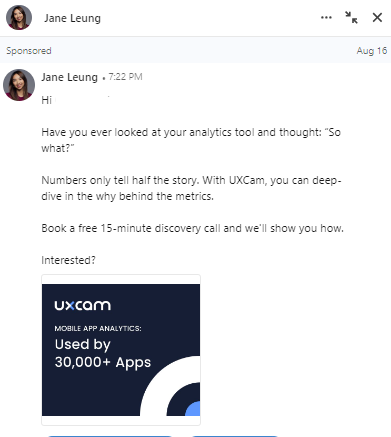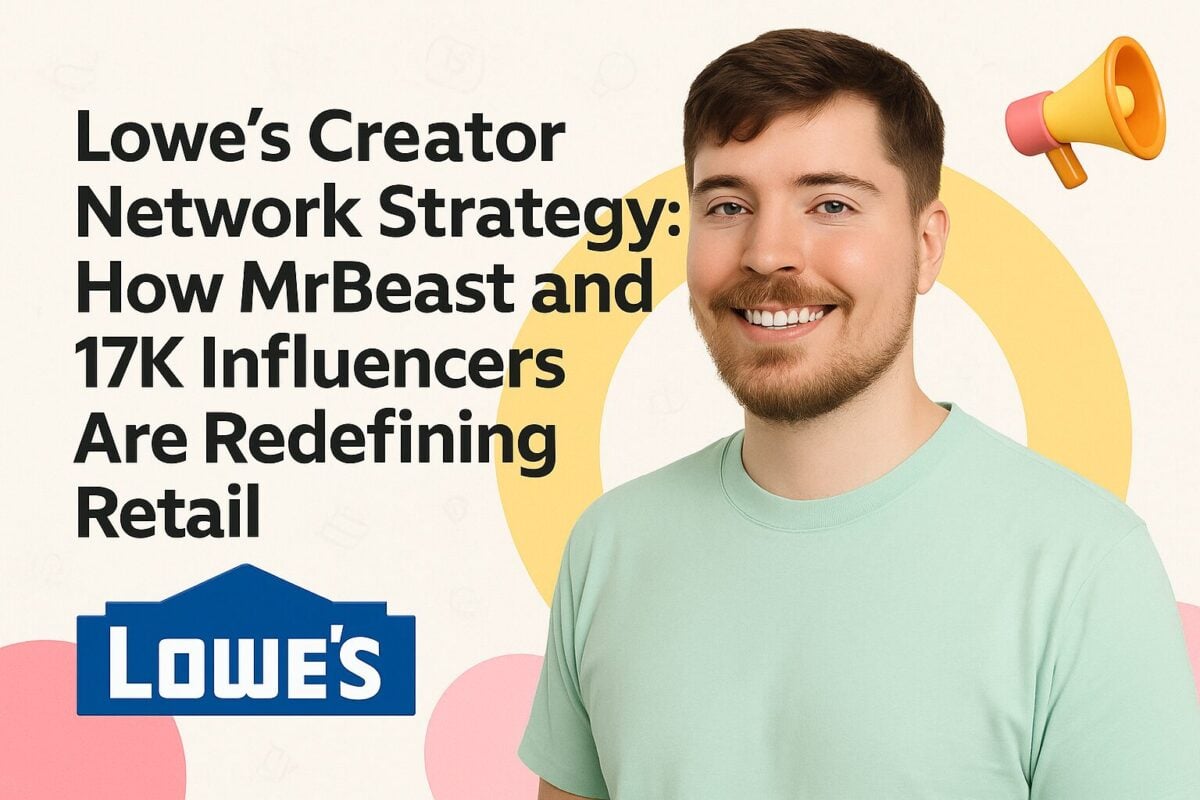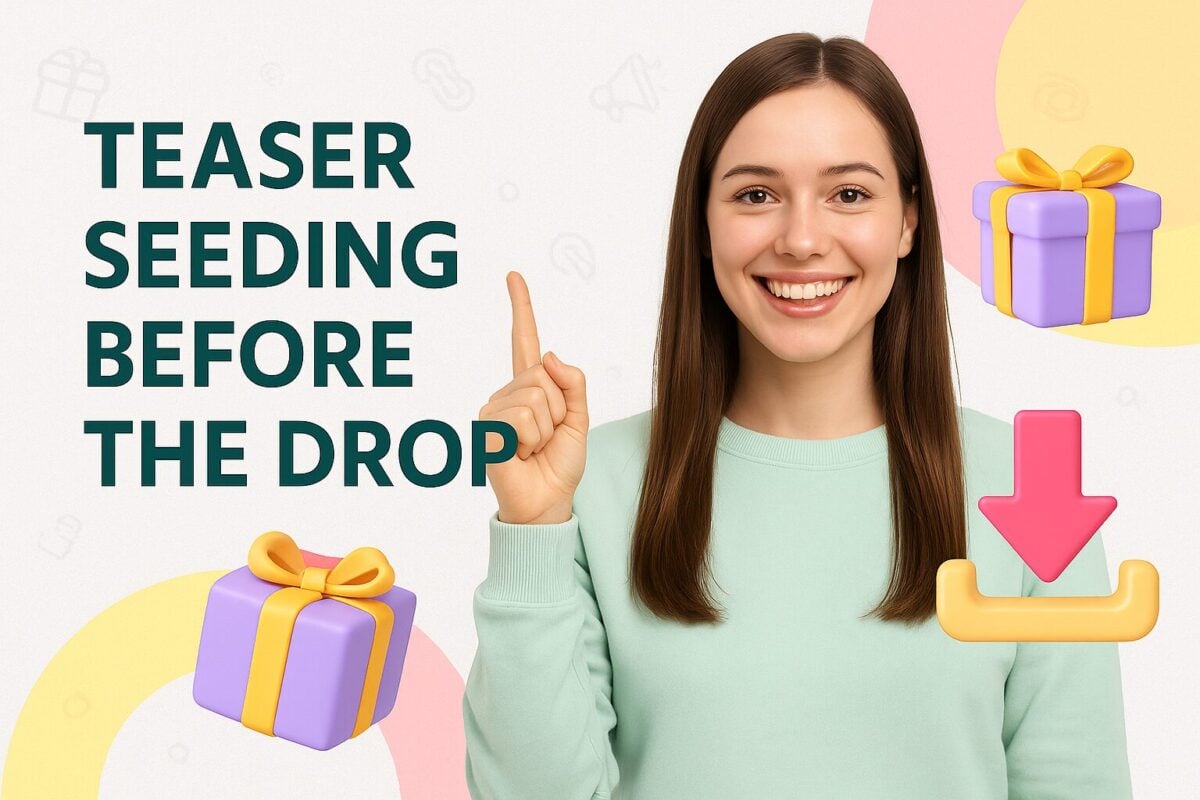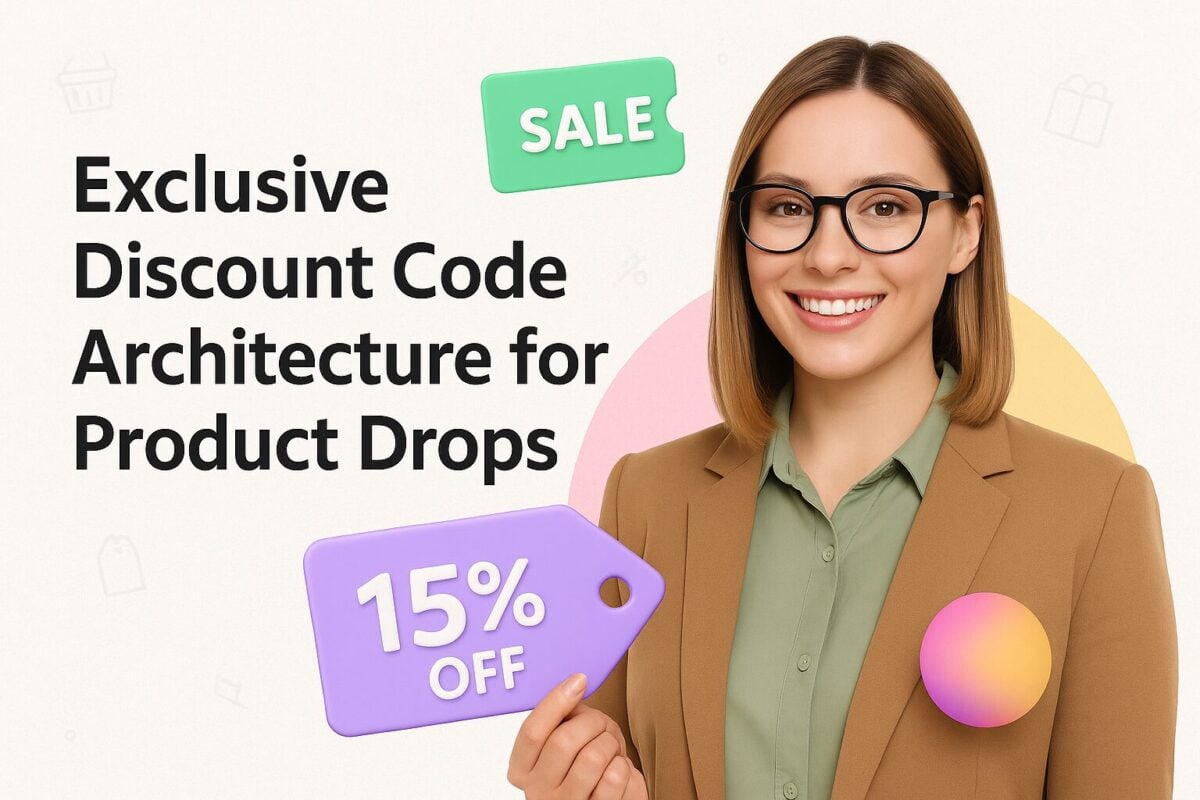A good LinkedIn marketing strategy focuses on building a strong network by consistently engaging with your target audience through tailored content and meaningful interactions. By leveraging LinkedIn's advanced features, such as Sponsored Content and LinkedIn Analytics, businesses can refine their approach to effectively reach decision-makers and industry leaders.
With over 1 billion members in over 200 countries, LinkedIn is a global social media platform with most of its audience coming from affluent and educated backgrounds. LinkedIn is the social network of choice for senior-level executives, management, and thought leaders.
Serious decision-makers who couldn’t care less for Facebook statuses, Twitter tweets, YouTube videos, or Instagram images still often take an avid interest in thought-provoking posts shared on LinkedIn.
A strong LinkedIn strategy is essential for reaching the right audience and building valuable connections.
Who can benefit from a LinkedIn marketing strategy:
- Small businesses that want to establish credibility, expand their network, and stay competitive in their niche.
- B2B companies looking to generate high-quality leads and build lasting relationships with key decision-makers.
What Are The Benefits Of LinkedIn Marketing?
As a 22-year-old social media platform, LinkedIn has had a lot of time to flourish and carve a specific audience for itself. Over the years, the platform has been established as a place for businesses and professionals to not only mingle but also market their products, generate leads, find jobs, accelerate their career growth, and exhibit thought leadership.
So, it makes sense for businesses to take advantage of LinkedIn's popularity and use it for marketing. But why exactly does LinkedIn marketing stand out among other social media platforms? Let's explore its benefits.
Increased Brand Awareness
According to Mel Carson, a social media and personal branding strategist,
"Your LinkedIn profile is your first impression in the digital world. Make sure it's a strong one that accurately reflects who you are and what you stand for."
That's quite simply the reason for any brand to be present and active on the platform. It's where you show your brand's true personality and purpose. You can create a detailed LinkedIn company page to show visitors all the basic details of your business. Then, there's the option to post content, which you can use to inform people about your brand.
Lead Generation
LinkedIn is a go-to platform for B2B marketers to generate leads. In fact, 40% of B2B marketers report getting high-quality leads through the platform.
But how? With LinkedIn, you can target your audience based on their job title, industry, company size, etc. You can also reach out to decision-makers directly through LinkedIn's messaging system. Plus, the content you post on your company page can also act as a lead magnet, attracting potential customers to your brand.
Networking Opportunities
There was a time when you'd have to wait for days, if not weeks, to get an appointment with a potential client or partner.
With LinkedIn, that's no longer the case. You can connect and network with professionals from all over the world, build relationships, and even form partnerships within a matter of hours.
LinkedIn also has groups where like-minded professionals can gather to discuss similar interests. For example, B2B marketers can join groups related to AI's penetration in the business world. The connections you foster in these groups can pave the way for business and professional opportunities.
Content Distribution
LinkedIn is where brands can share their knowledge and company updates with a global audience. The platform supports various forms of content, from articles, images, and videos to presentations and more.
For example, Superside, a creative subscription service, posts a variety of content on LinkedIn. You'll find memes, polls, questions, informational posts, and slideshows on their page. For example, here's one they've created about finding creative inspiration.
Thought Leadership
For a brand or professional to be trustworthy, they have to show their expertise and knowledge in their respective fields. LinkedIn is useful in that regard, too. You can post industry-relevant content to show potential clients that you're on top of the latest trends and developments.
Take this post from Bradford Hunt, Director of Amazon at Disruptive Advertising, as an example. He has shared his insights about Amazon's new "Grow brand impression share" feature for Sponsored Brands campaigns.
Besides building an audience, such posts also establish brands and professionals as thought leaders in their industry. Being the Director of Amazon at a major digital marketing agency, it's safe to assume that Bradford Hunt knows what he's talking about.
So, his post is likely to attract a lot of engagement and visibility on the platform. His being up-to-date with Amazon's latest announcements further adds to his credibility.
How the LinkedIn Algorithm Works
LinkedIn has been relatively open about how its algorithm works.
- An AI bot checks your content to ensure that it isn’t spam. If your content fails this test, it is unlikely to be served to many peoples’ feeds. Only share high-quality material on LinkedIn.
- Your post will be seeded to a trial audience. The algorithm will then examine the engagement of those initial people. If they show little interest in the post, then it is unlikely that LinkedIn will show your post to many more people.
- If your initial audience favored the post, giving it a reasonable number of likes and shares, then the LinkedIn algorithm will do further checks to ensure it isn’t spam, and that the results are credible for your audience network. They will widen the circle of accounts to whom they feed the post.
- Assuming your post is still performing well, human editors will eventually become involved. They will read the post and decide whether it merits boosting to a broader audience.
Best LinkedIn B2B Marketing Strategies
Unlike other social media platforms, LinkedIn caters to a primarily professional audience. While this makes it easy to target potential B2B clients, it also means that you need a specialized approach to engage your audience. Here are some of the best LinkedIn B2B marketing strategies you can follow.
Use LinkedIn's Filters to Target Your Desired Audience With an Automated Tool
Many B2B businesses make the mistake of sending generic messages or connection requests to people on LinkedIn. This often results in low response rates and a waste of time and effort. Instead, you should use LinkedIn's built-in filters to find ultra-specific potential clients.
LinkedIn's filters include title, line of business, company size, seniority level, keywords, job function, and geography. So, you can get pretty specific with your targeting.
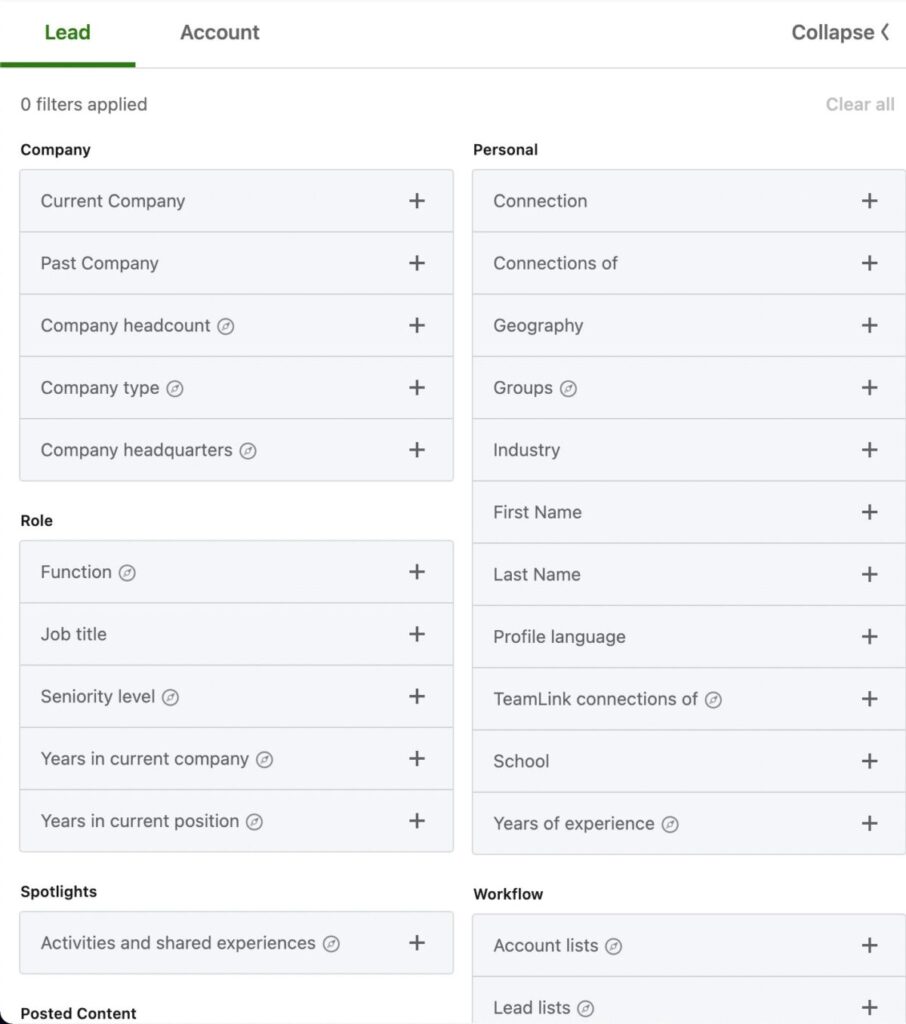
Source: socialmediaexaminer.com
Next, craft clear and concise messaging that presents the unique selling points of your business. Your message should highlight the value your business can offer to the targeted individual or company.
Now, you're all set to send out this message to the people you've filtered. Instead of doing this manually, use an automated LinkedIn marketing tool to send messages at scale.
Why This Strategy Works
One, it allows hyper-targeting, which means you're not wasting time and resources on unqualified leads. Two, automating the process saves a lot of manual effort.
If you need any more convincing, take note of how Bambee, an HR manager, used this exact strategy to generate over 300 leads and close 49 deals, generating $100k in revenue. Bambee caters to small and medium-sized businesses, so the company used LinkedIn's filters to find business owners with 5 to 150 employees. Their search revealed over 520,000 businesses.
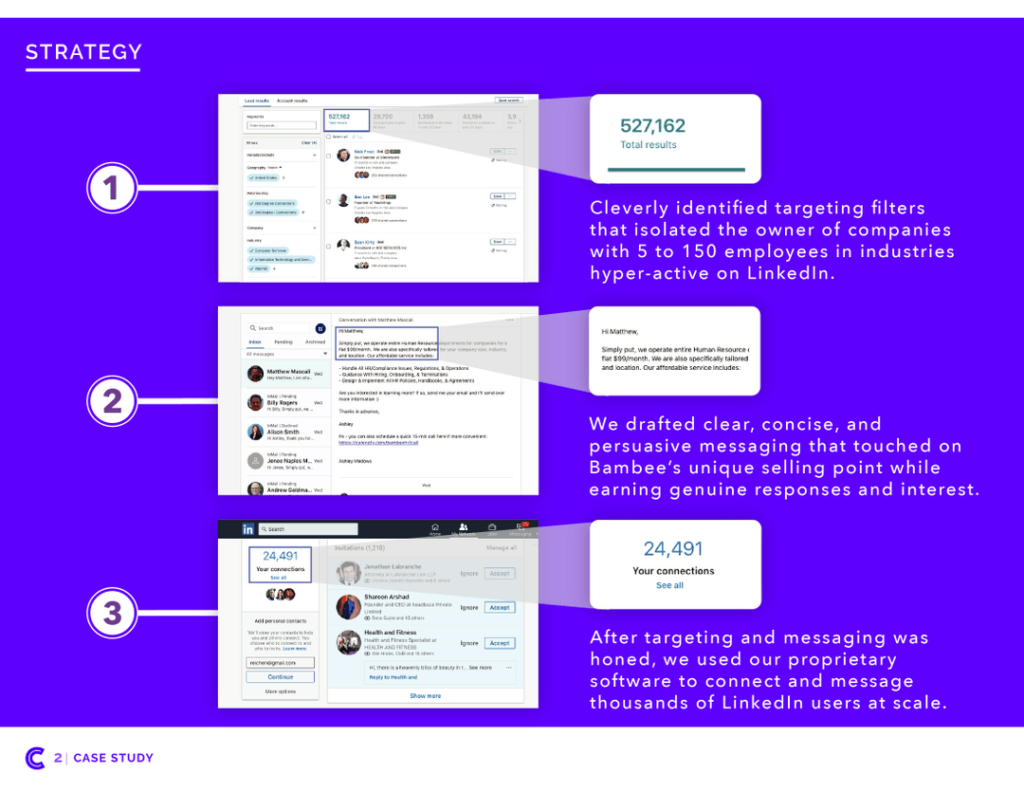
Bambee’s LinkedIn strategy
The company's LinkedIn marketing partner, Cleverly, then crafted a persuasive message for Bambee and used their proprietary automated tool to send it out to nearly 25,000 LinkedIn users. In just 90 days, Bambee saw the results we've mentioned above.
Combine Organic LinkedIn Content With Targeted Outreach to Build a Personal and Professional Network
When it comes to LinkedIn marketing, business owners shouldn't only focus on growing their business accounts but also their own. A two-tier strategy can help you accomplish this.
On the one hand, create content on your company page. For example, share client stories, upcoming events, infographics, client testimonials, and helpful slideshows or videos.
Don't stop there. On the founder's personal LinkedIn page, they should publish articles, share their thoughts on industry trends, and comment on relevant posts by others. This way, your company's professional and founder's personal brand will both gain exposure and credibility.
Now, you can start your targeted outreach campaign with double the impact. Share your company's content on your personal page and vice versa. This cross-promotion strategy helps build a strong personal and professional network, increasing the chances of gaining qualified leads.
Why This Strategy Works
Business owners don't exist in a vacuum. They have networks, both personal and professional, that can be leveraged for their business's growth. Combining organic content creation with targeted outreach allows you to benefit from both your personal and professional brand and make a greater impact than using one avenue alone.
That's exactly the approach Intelus, a LinkedIn marketing agency, took for 2nd Vault, a SaaS company. The agency created organic content for the client's company page and published thought leadership content on the founder's personal page. Then, they used targeted outreach to build the founder's personal network and get more followers for the company's professional LinkedIn page.
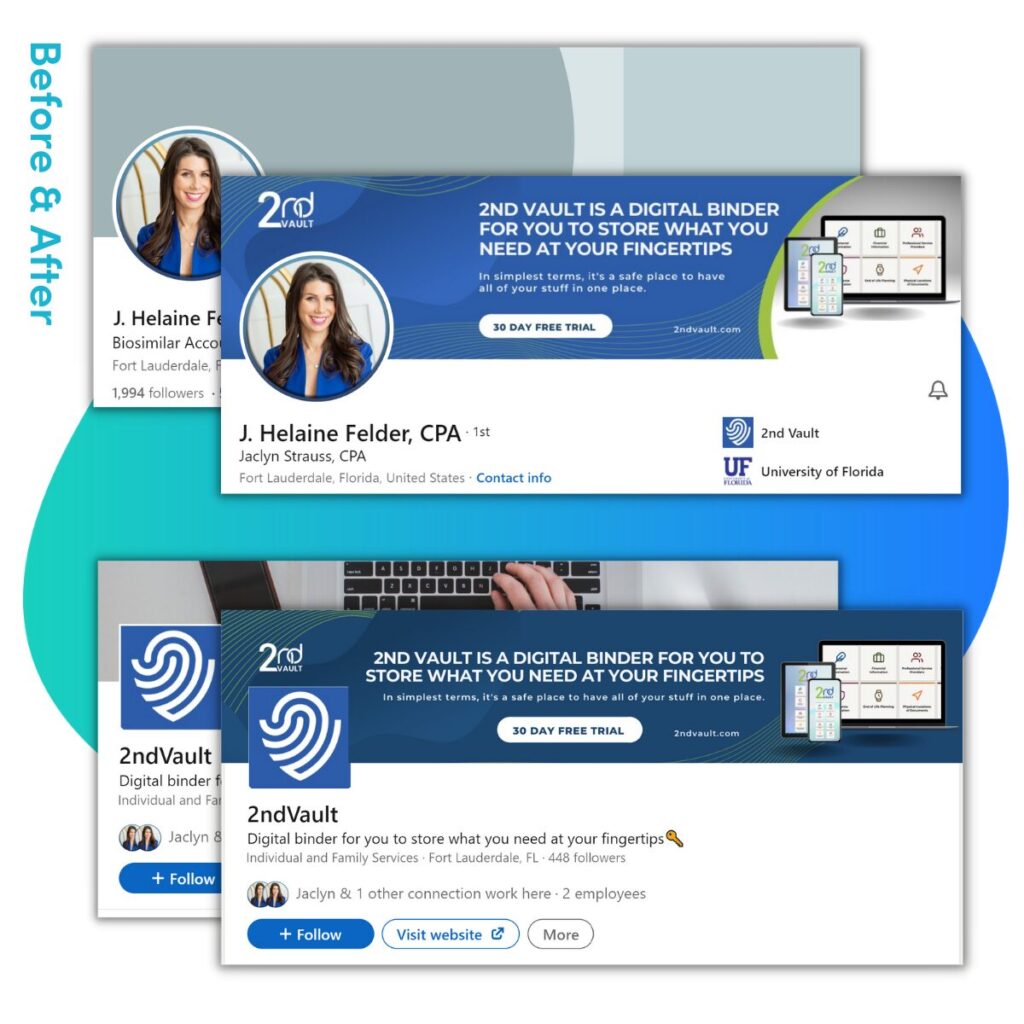
2nd Vault LinkedIn strategy
The result was 350 leads in a year. All it took was content, but not just any content — strategic content in the right places.
Use Advanced Strategies for LinkedIn Ads
LinkedIn ad campaigns can help you reach a highly targeted audience and generate leads. However, with the increasing competition on LinkedIn, basic ad strategies may not be enough to stand out.
Here are some advanced strategies you can use:
- Use Audience Expansion: Audience expansion helps you increase your campaign's reach by showing your ads to people who have the same characteristics as your target audience. This way, you can reach potential leads who may not have been included in your original targeting.
- Test Multiple Ad Formats: Use different ad formats such as sponsored content, messaging ads, text ads, and boosted posts to see which ones perform the best. Blair Huddy, Founder & CEO at Hudson Davis Communications, reports,
"I've used image ads, article ads, and boosted posts. Article ads are top performing, followed by boosted posts and then image ads in terms of effectiveness."
- Use Dynamic Ads: These ads automatically personalize your message and image based on the viewer's profile data, such as their job title or company. Higher personalization equals higher engagement, so it's worth trying out.
Why This Strategy Works
An advanced ad campaign works because you're targeting specific audience segments and using personalized messaging. LinkedIn also offers advanced targeting features that you can use to further narrow down your audience, such as job function, skills, and interests.
Intelus followed this strategy to help a SaaS marketing agency generate leads. The agency focused on different ad types and used KPI measurement to see which ones performed best. They also used different ad creatives and monitored the ads regularly to make the required changes. Their strategy resulted in the client doubling the number of deals in their sales pipeline.
Use a LinkedIn Automation Tool As a Lead-Generation Machine
There's only so much you can do manually. A LinkedIn automation tool, such as Dux-Soup, can help accelerate and streamline the lead generation process. Here's how:
- Personalized Invitations: With Dux-Soup, you can customize your connection requests and make them more personal. This increases the chances of your request being accepted.
- Custom Time Delays: You no longer have to worry about mass inviting people in a short span. Dux-Soup lets you set custom time delays between each invite, so it's more natural and less spammy.
- Auto-Messaging: Dux-Soup also allows for automated messaging. All you have to do is set up an intelligent campaign, and the tool does the rest.
- Automate Profile Visits: You can also use Dux-Soup to visit profiles automatically based on your target audience. The tool can collect emails that you can later use in your email marketing campaigns, too.
While you're at it, automate other processes, too. For example, you can use LinkedIn posting tools to schedule your posts.
Why This Strategy Works
In a B2B business, you already have a lot on your plate, which may cause you not to be able to give your LinkedIn marketing the time and attention it needs. A LinkedIn automation tool takes care of the repetitive tasks involved in lead generation. You can then focus on the human side of communication.
Dux-Soup is used by over 80,000 companies, one of which is Silicon Prairie, a B2B finance service. The company zeros in on 2nd-degree connections that have been active on LinkedIn in the past month. Then, they use Dux-Soup to automate profile visits and gather email addresses. From there, they couple LinkedIn outreach with email marketing to make their mark.
The profile visits alone help quite a lot. When people notice that someone has visited their profile, they're more likely to visit back. It's simple human psychology; you're curious to know who's been checking out your profile. Many of the company's prospects have reached them this way.
Silicon Prairie's founder has used the tool to increase his personal network by 150%, getting up to 19,000 connections. The tool has also helped Silicon Prairie create a database of prospect information that they can retarget over and over again. This strategy is such a hit that the B2B business gets up to 20 new leads per day.
Employ an Email-LinkedIn Hybrid Approach to Generate B2B Leads
If LinkedIn alone doesn't seem to be yielding the results you desire, bring emails into the picture. Create a four-step workflow like this:
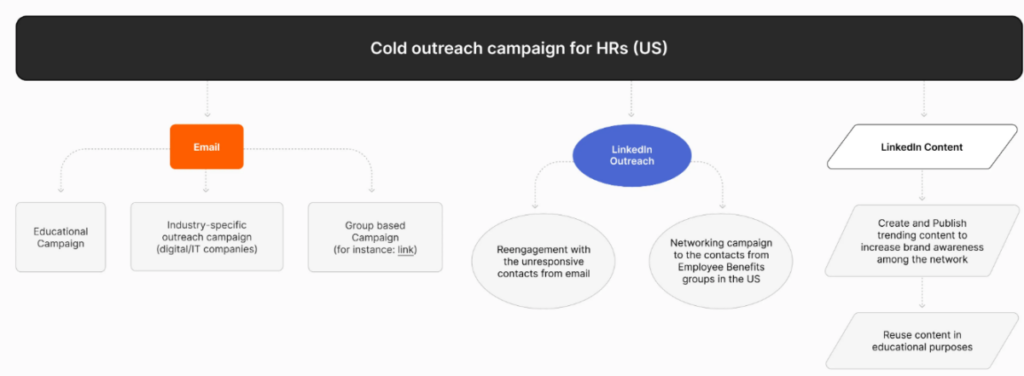
Source: belkins.io
Step 1: Send LinkedIn Connections
Select your target audience using LinkedIn filters and existing customer personas. Then, send connection requests to those prospects. Wait for two weeks for them to accept your request. Once they do, warm up the connection with relevant content, such as blog posts or industry updates.
Step 2: Send Personalized Emails
Now, use personalized email templates to reach out to your newly connected prospects. Reference your LinkedIn connection in the subject line and body of the email to increase familiarity and improve open rates.
If you get a negative response, allow a one-month cool-off period before following up again with another email sequence.
Check out our Email Marketing Tips guide to learn how to send highly personalized emails that generate leads.
Step 3: Create an Educational Campaign
For the next four weeks, create 6 to 8 pieces of content that provide useful information and educate your target audience. Share these pieces through both LinkedIn and email, with a targeted call-to-action at the end of each piece to encourage leads to take action. The goal is to keep you on the prospects' radar.
Step 4: Follow Up Via LinkedIn
It's time for LinkedIn outreach. After two weeks, reach back out to your prospects through LinkedIn. Share a piece of content, mention something from an email they received, or make a warm introduction to one of your existing customers.
Keep the conversation going and build rapport with your prospects. This will help you get more responses.
Why This Strategy Works
Often, a single touchpoint is not enough to convert a prospect into a customer. This strategy uses multiple touchpoints across different channels to increase the chances of conversion.
When you warm up connections and provide them with educational content, you build trust and credibility. Then, you follow up regularly, keeping your business at the top of their minds. So, when you reach out through LinkedIn, the prospect is likely to be more receptive and willing to engage with you.
Belkins, a marketing agency, used the same approach with YorkTest, a health and wellness company. The client wanted to reach other businesses and get them to use their health tests as employee benefits.
Belkins created a blend of emails, educational content, and LinkedIn outreach to get attention from prospects. Their campaign had an impressive 95% customer satisfaction rate. YorkTest was able to book 5 appointments per month.
Effective LinkedIn Marketing Strategies for Small Businesses
Small businesses can use the same strategies as those mentioned above for their LinkedIn marketing campaigns. However, these businesses often need to do more with less, making it important to focus on cost-effective and efficient methods. Here are some of them.
Build Brand Recognition by Connecting With Influencers and Decision-Makers In Your Target Market
Small businesses usually lack the familiarity and trust established by big brands. One way to build recognition and trust is by connecting with influencers and decision-makers in your target market. These individuals can help spread the word about your business and build credibility for your brand.
Again, a blend of organic content and outreach helps. Post strategic content that is tailored to your target audience's interests. When you get engagement on your posts, reach out to those who liked and commented. Connect with them and start building relationships.
Why This Strategy Works
Cleverly used this strategy to build brand recognition for LeaseLock, a young startup. Since LeaseLock was a new, small business, most decision-makers did not want to take a call with them since they already had trusted suppliers or did not want to purchase something they didn't recognize.
Cleverly did two things to establish trust for the startup:
- Connected with influencers and decision-makers on LinkedIn
- Posted content while implementing direct LinkedIn outreach campaigns
The hybrid of advanced prospecting and targeted marketing helped LeaseLock generate 386 leads in 12 months. They also generated $1 million in revenue.
Build Links Between LinkedIn and Website Content to Boost SEO and LinkedIn Traffic
LinkedIn is one of the highest authority websites globally. Imagine if you connected your website with LinkedIn and used all its link juice to boost SEO and LinkedIn traffic. It will definitely be helpful for a small business since you need all the search engine and LinkedIn credibility you can get.
For this approach, you need to start with an SEO strategy that includes blog content creation. Then, post snippets of your blog or website content on LinkedIn with a link back to the full article. When someone clicks on that link and goes to your website, it will create traffic to your site from LinkedIn.
You can also incorporate hashtags in your LinkedIn content to make it more discoverable. It will ultimately increase the number of clicks to your website. Use hashtag research tools to find the most relevant hashtags for your content.
Why This Strategy Works
It works because it's a two-in-one approach. You're not only posting organic content to LinkedIn, but you're also boosting your website's SEO. By using targeted keywords and phrases in your posts and linking back to your website, you are increasing the chances of your content appearing in search engine results pages (SERPs).
As a result, your website gains more traffic, while your LinkedIn profile also benefits from increased views and engagement. You can use LinkedIn analytics tools to track post performance. They also help you see how many website clicks you are getting from LinkedIn.
RevenueZen did something similar for StockIQ, a small-scale IT supply chain solution provider. The agency focused on creating blog and LinkedIn content and then linking the two.
It worked! The client saw a 500% increase in inbound leads. On the SEO side, they experienced a 210% increase in total ranking keywords. It was a dual win.
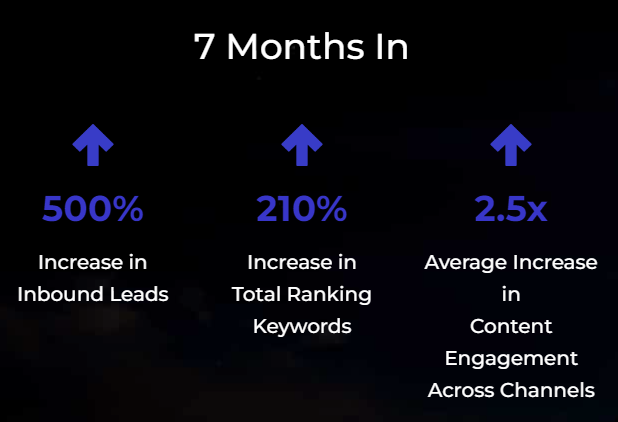
Source: revenuezen.com
Use LinkedIn's Message Ads to Target Prospects When They Are Active
As a small business, you need all the help you can get to maximize your reach. LinkedIn's message ads do just that. These are paid ads that appear in a user's inbox as a personalized message from your side.
You can select your target audience based on attributes like company, demographics, education, interest and personas, and job experience. Then, create a concise yet informative message that stands out and compels the recipient to take action.
Why This Strategy Works
As a small business, you may not have the organic reach a larger counterpart enjoys. Message ads can assist in bridging the gap between you and your prospects.
If you get the ad copy right, you can expect to get a ton of responses. Take this example from Jane Leung, strategic advisor at Hive Wealth. Her message is just a few sentences long, but it has an interesting tone that piques the recipients' curiosity.
She has also added a link to a landing page where the recipient can book a 15-minute discovery call. Her message has everything: a compelling hook, a pain point, a brief business introduction, and the solution. That's what you need to aim for, too.
Tips For Creating Your LinkedIn Marketing Strategy
Regardless of the business size, here are some LinkedIn marketing tips you can use to build a result-driven strategy.
1. LinkedIn Strategy Prerequisite Tips
Define Your LinkedIn Marketing Goals
Marketing on LinkedIn is no different from any other social marketing. You need to begin each campaign by defining and setting your goals. You need to ask yourself why, precisely, are you undertaking this LinkedIn marketing campaign. What are you hoping to achieve from it?
You want your goals to be SMART – Specific, Measurable, Achievable, Realistic, and Timely. In particular, you need to ensure that you can use some suitable metrics to measure the success of your campaign.
Some common goals (expressed generally here, not fully SMART) include:
- Increasing your brand awareness (probably best measured using data on your LinkedIn Page analytics)
- Building leads (LinkedIn is after all the network where you are most likely to find potential business decision-makers/customers)
- Engaging with your target audience (again you will find data on this in your LinkedIn Page analytics and less tangibly in your participation in LinkedIn Groups)
- Selling your product (perhaps less common on LinkedIn, but still possible indirectly)
You can make them smart by including the missing pieces. For example, instead of ''building leads,'' you can say ''building 10 solid leads per month.''
Identify Your Target Audience
Before you can start creating ad copy or organic content, you need to know who you're speaking to. Identify your target audience by researching demographics and interests. You can use LinkedIn analytics to gain insights into the individuals who are currently engaging with your content.
Plus, use third-party audience research software to gather more information about your target audience, such as their job titles, industry, etc. According to Kamel Ben Yacoub, Founder & CEO at Getuplead,
"From my experience, the skills, job functions, and job titles are the most performing audience attributes to use for targeting an audience. The seniority audience attribute (manager, director, VP...) can also help filter out juniors and entry-level employees."
Focus on these attributes when creating audience personas. For example, if you're a healthcare HR software provider targeting small businesses, your audience personas could include HR managers or directors within the healthcare industry with skills such as employee recruitment and performance management.
Optimizing Your LinkedIn Profile and Company Page
Like many social networks, LinkedIn has two types of pages – personal pages where people list their past jobs and successes, and company pages. Once any manager or employee adds your business as a place of work, LinkedIn will create a company page for you. However, unless you add content and fill in the gaps, your company page will look uncared for and unclaimed.
An attractive, informative company page is essential for any business on LinkedIn. It will be one of the most likely places for your target audience to visit on LinkedIn. You should imagine it as being a virtual store, whether you sell items or just use LinkedIn to build brand recognition.
Your LinkedIn company page is a perfect place to narrate all the positive stories about your business. You can use it to highlight your team and any awards you have won. Ultimately, LinkedIn is a network of people, so you should use your LinkedIn company page to emphasize the public faces of your organization.
Anybody who wants to learn about your business on LinkedIn will make a point of searching for your company page. It is one of the most common ways that people research about your company – what you do, what you make, where your offices are, and who your senior management and executives are.
Take SmartSites as an example. The digital marketing agency posts awards, customer testimonials, case studies, and educational content on its LinkedIn company page to engage and educate its audience.
As a result, their company page has over 8k followers and is seen as a valuable resource for anyone interested in digital marketing.
You will want your LinkedIn company page to reflect all the branding you use elsewhere. It should include your official logo, your colors, your fonts, and links to your website URL. Think about the types of questions your potential customers would ask and preempt them by including the answers on your company page.
As with all your online assets, you need to carefully consider the copy you use on your LinkedIn page, including relevant keywords in your text.
Make sure you continually update your company page, however. If you want to be considered a serious force on LinkedIn, you need to publish relevant, informative, and interesting content regularly.
2. LinkedIn Content Strategy Tips
Follow these tips to determine what kind of content to post on LinkedIn.
Understand the LinkedIn Landscape
Keep track of what kind of content is currently doing well on LinkedIn. Is it short-form or long-form posts? Is it video content or written articles?
Pay attention to the type of content your target audience is engaging with. For example, if your audience is primarily B2B professionals, they may be more interested in educational or informative content rather than entertainment-focused posts. On the other hand, younger audiences enjoy slideshows and video content more than lengthy articles.
Analyze What Your Competitors Are Doing
Your competitors, especially the ones that are already doing quite well on the platform, can give you a great idea of what types of content are working and not working in your industry. Here's how to analyze your competitors:
- Select Competitors: First, determine who your competitors are. Ideally, they should have the same target audience as you.
- Analyze Their Content: What type of content are they posting? Also, notice which content gets the most engagement. How often do they post? Do they use hashtags or tag other users?
- Identify Missing Links: Maybe they're using certain tools to create content. Or they're participating in different LinkedIn groups. Their hashtag game could be strong, too. Try to look for things that they're doing (but you aren't).
You can also use competitor analysis tools to streamline this process. Based on what you find, tweak your content strategy.
Create a Content Strategy
According to Sabina Brdnik, Marketing Specialist at tretton37,
"We have found that a mix of shorter clips (video format up to 60 seconds MAX) showcasing our thought leaders, and longer form articles posted directly on the LinkedIn page (so not using external links in posts), perform really well."
The idea is to use different types of content on the platform rather than just sticking to long-form articles.
Some content types that do well on the platform are articles, videos, carousel posts, infographics, and images. Although you can share links to posts you have uploaded to your existing blog, studies show that LinkedIn's algorithm favors material published on the platform rather than promoting links offsite.
You don't have to create original content for all your LinkedIn posts. You can share other articles that you come across that you feel will be of value to your target audience. Remember, the overall goal of your LinkedIn account is to be of use to your target market, and collating other people's relevant content can achieve this, as well as your original pieces.
However, don't only rely on other people's content. Your own thought leadership content is the main driving force behind a successful LinkedIn strategy. Kamel Ben Yacoub, Founder & CEO at Getuplead, says,
"At Getuplead we have seen a higher engagement on two different formats: Thought leader ads and videos. The use of videos for awareness works great. Using the 'video views' objective can drive a lot of engagement at a cost effective spend."
3. LinkedIn Posting Strategy Tips
Here are some tips to help you create an effective posting strategy on LinkedIn.
Post At the Right Times
Select a posting frequency for your LinkedIn account, and then make sure you post at the right times. The best time to post on LinkedIn is generally during the workweek, since your target audience is most active then.
Rebecca Whitlocke, Founder of Antibes Yachting, recommends,
"I've had the best engagement for posts I do in the morning CET time."
However, you can use your account's analytics to find the highest activity time for your audience.
Get Your Employees to Share Content
Employee advocacy is a powerful tool for boosting your company's presence on LinkedIn. Encourage your employees to share your company's content on LinkedIn. Employees sharing content not only increases visibility; it also adds a personal touch and humanizes your brand.
Engage with Your Audience
After you post something, don't forget about it. Respond to comments and messages. You should also participate in LinkedIn Groups to build a community which you can later share your content with.
As Blair Huddy, Founder & CEO at Hudson Davis Communications, says,
"Groups and newsletters are doing this extremely well right now. I'm seeing many people create groups that get thousands of members with lovely discussions and newsletters with thousands of subscribers."
On your own page, you can create interactive content to increase engagement. For example, instead of simply asking a question, run a poll. Live videos also tend to garner more engagement.
Leverage LinkedIn Analytics
LinkedIn Analytics provides you with a ton of data that you can use to improve your content strategy. Focus on metrics like engagement rate, click-through rate, and follower growth. Notice which posts get the highest engagement and try to create more of those.
You can also use third-party tools to get deeper insights into your LinkedIn content. For example, Brand 24 lets you "listen" to your LinkedIn audience's sentiment and gauge the general perception around your brand. Similarly, Birdeye lets you see how your LinkedIn strategy stacks up against your competitors.
Ideally, you should do an in-depth analysis every month. Sabina Brdnik, Marketing Specialist at tretton37, says,
"We review them on a weekly basis, and a more in-depth analysis at the end of each month, so we can plan what to tweak for the month ahead."
Paid LinkedIn Marketing
Like most social networks, you can boost your brand’s performance on LinkedIn by buying ads. LinkedIn has extensive targeting capabilities, so you can ensure that LinkedIn only delivers your ads to your preferred audience.
The ads you can buy include:
- Sponsored Content: Here, you pay to amplify the content you share. This means that your posts reach a much larger audience than you could achieve organically. You can advertise the following content types: single images, videos, carousels, events, documents, and thought leadership pieces.
- Text Ads: These are PPC ads that appear on various LinkedIn pages, such as the LinkedIn home page, profile pages, search results pages, and Group pages.
- Sponsored Messaging: These allow you to send personalized messages to LinkedIn members – like email marketing but done within LinkedIn.
- Dynamic Ads: These are personalized ads that use the viewer's LinkedIn profile data to create a custom ad. Some types of dynamic ads include follower ads, sponsored ads, and spotlight ads.
- Lead Generation Forms: You can use these to collect leads from sponsored content campaigns. When someone clicks on your ad, they’re taken to a form that the platform populates with their profile information, making it easier for them to submit their details.
Wrapping Up
To sum up, LinkedIn is a lot more dynamic and impactful than many think it to be. If you're willing to put in the effort and follow result-yielding strategies, you can expect the platform to work in your favor, whether it's for generating leads or maximizing sales.
From automating LinkedIn messaging to using a mix of ads, there are many ways to make your LinkedIn marketing strategy successful. You can take inspiration from the case studies we've discussed in this article or use the tips and insights to create your own winning LinkedIn marketing campaign.
Frequently Asked Questions
What should I include on my LinkedIn company page?
An informative LinkedIn company page is key for any business. Whether your company sells items or simply uses LinkedIn to foster brand recognition, you should think of your LinkedIn company page as a virtual store. Here you can share positive stories about your company, share about the awards you have won or show off your team. In short, you should use it to highlight the public face of your business. You can also include answers to questions your target audience will most likely ask.
How do I promote my company on LinkedIn?
To promote your company page on LinkedIn, there are a few things that you can do in addition to using keywords. Firstly, ask all your managers and other employees to follow your LinkedIn company page. You can also extend this invitation to existing customers. Secondly, make sure that you add a link to your LinkedIn page in your email signature, on your website and other social accounts. Your company’s chances of being successful on the platform will increase if your LinkedIn page becomes more visible.
How does LinkedIn ads work?
You can buy ads on LinkedIn to improve the performance of your brand. The ads that you can buy include sponsored content, text ads and sponsored InMail. With Sponsored content, you will pay to amplify the content that you share so that your posts will reach a bigger audience. PPC ads appear on various LinkedIn pages like profile pages, search results pages and the home page of LinkedIn. Lastly, Sponsored InMail works like email marketing and allows you to send personalized messages to LinkedIn members.
How effective is LinkedIn marketing?
Considering that LinkedIn marketing helps you reach 14.6% of the global population and over 40% of B2B marketers report generating high-quality leads from the platform, it's safe to say that LinkedIn is quite effective. However, your individual results will depend on your strategy.
Should I use images in the content that I share on LinkedIn?
LinkedIn does not rely that much on visual media like YouTube or Instagram, but images are still important. By including an image, you will always get better engagement. Instead of simply sharing an image, when you use LinkedIn you will be adding images to a text-based article. The text remains the chief part of your article and the image will be used to make it more interesting. Luckily, it is quite easy as you can add multimedia anywhere within your article.
What is the best content for LinkedIn?
LinkedIn is a more mature and serious platform compared to many of the other social media platforms. Here you can create and share blog posts that your target audience will find interesting. It is especially suited for articles about thought leadership that enable you to show your expertise in your market. You can share links to blog posts that you have uploaded to your own blog, but research has shown that posts published on the LinkedIn platform get better results.

